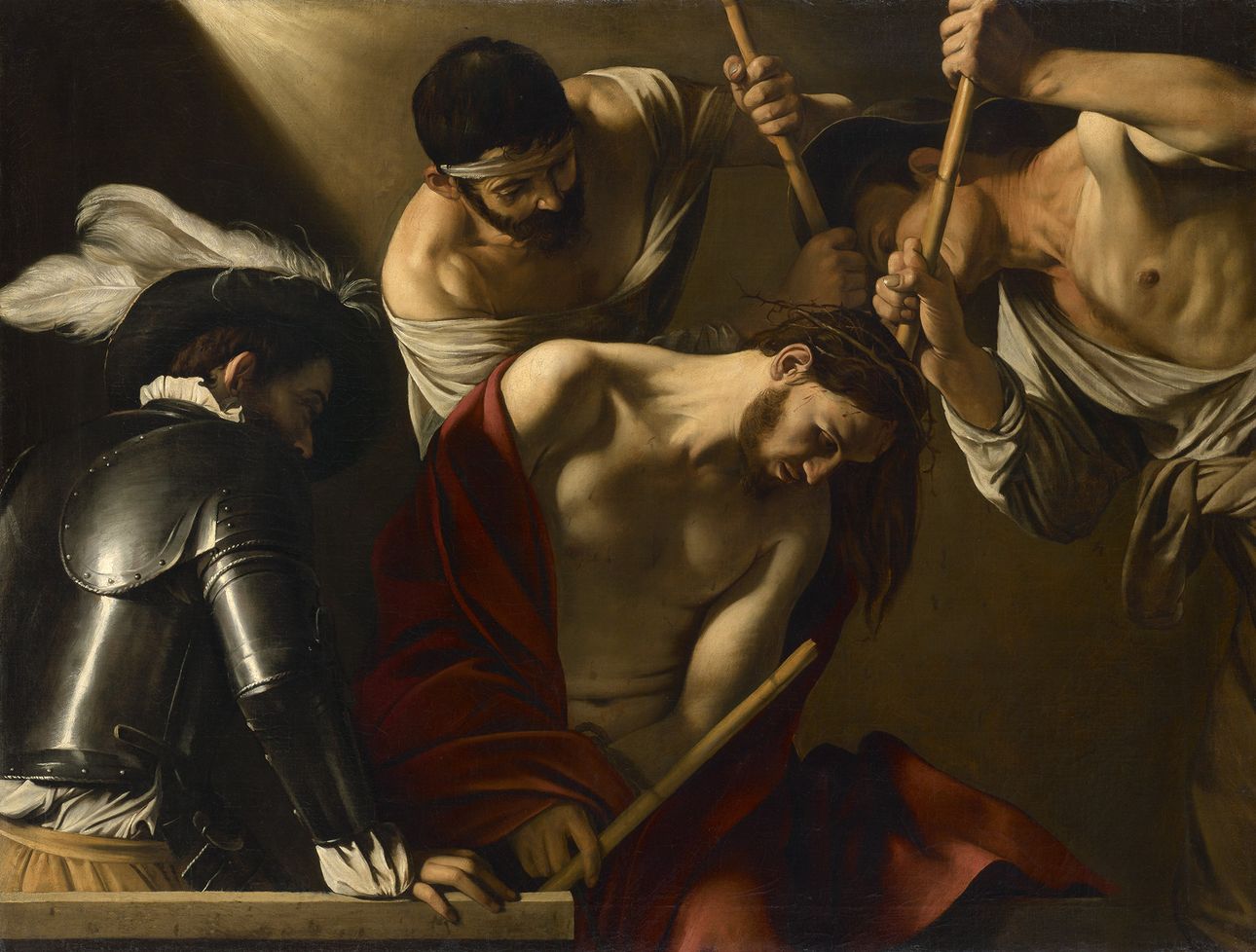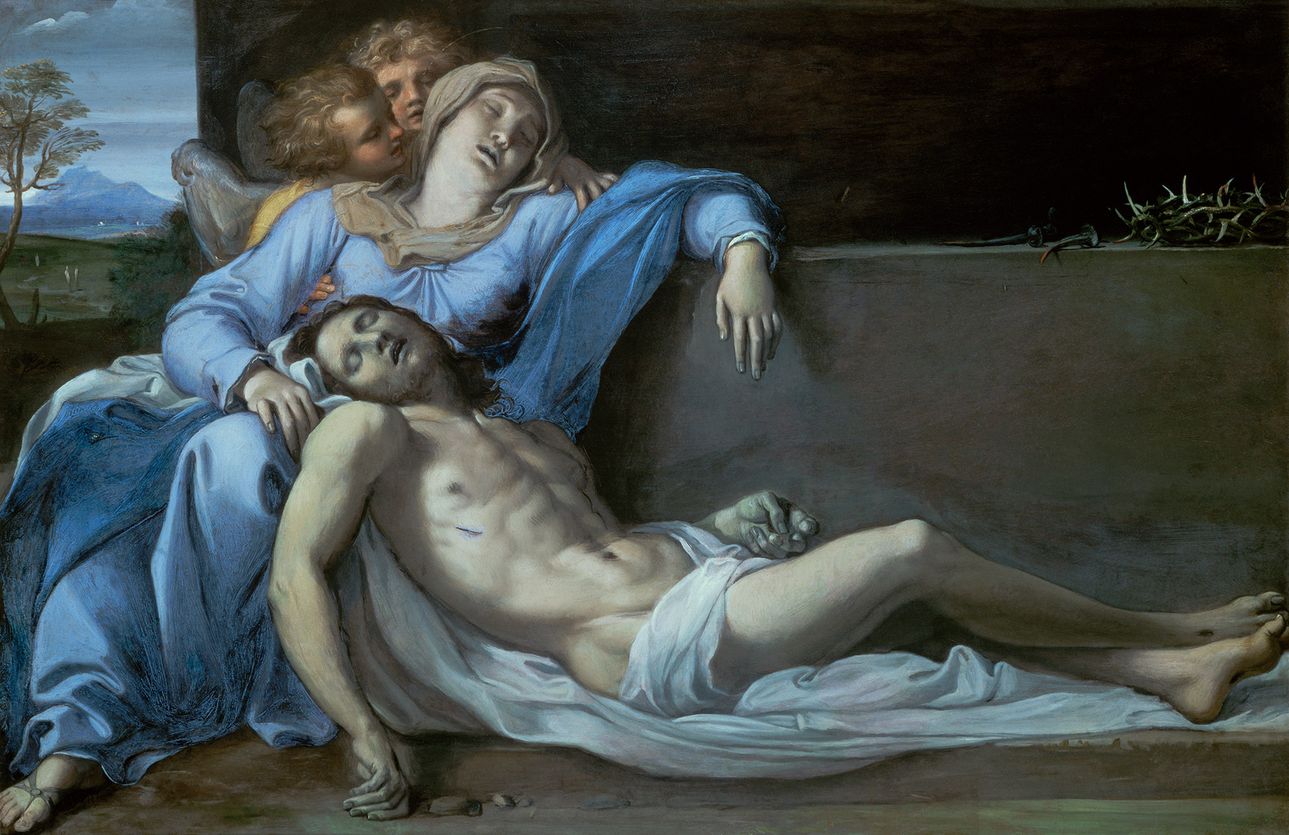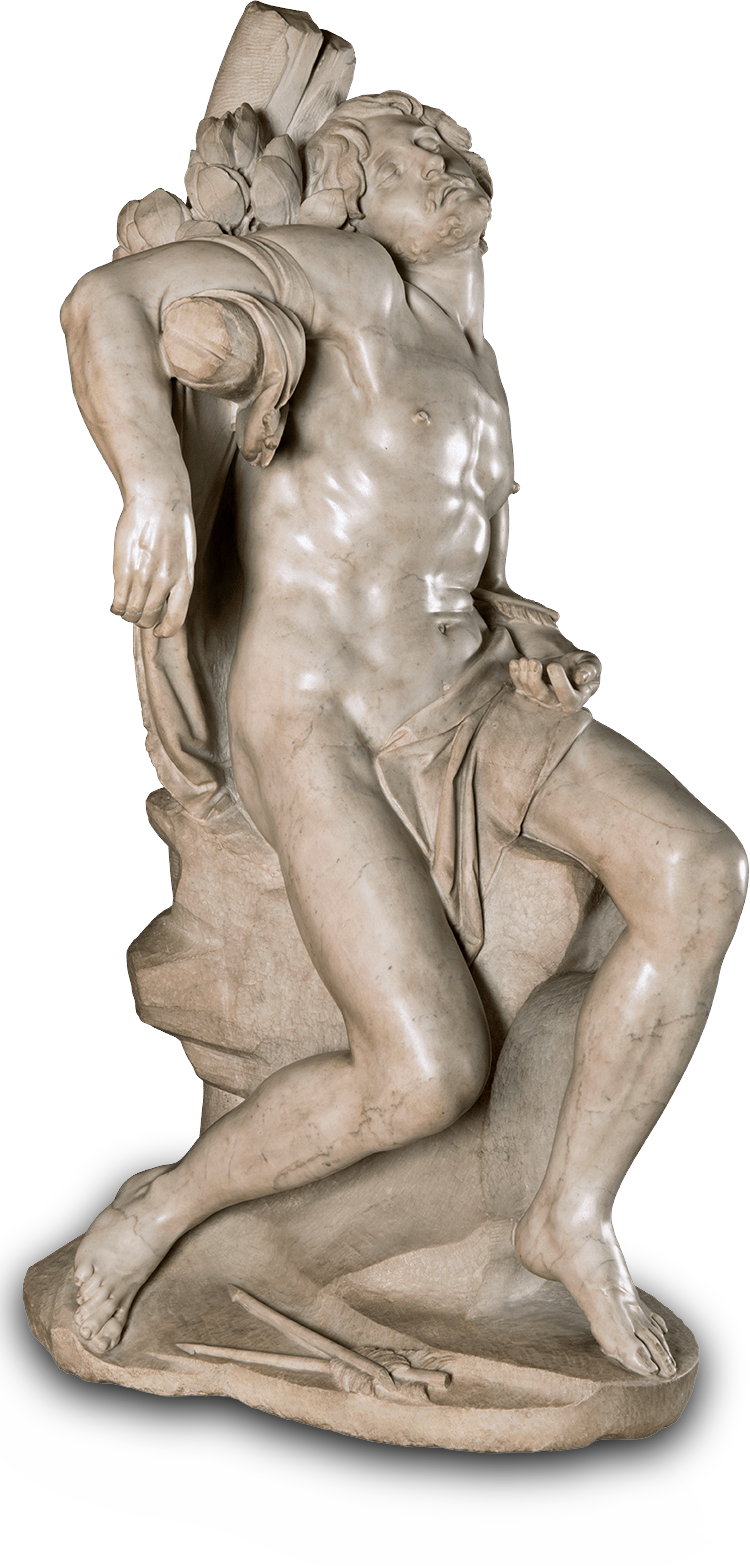What do we feel when we see Caravaggio‘s Crowning with Thorns?
In the early seventeenth century, artists in Rome had a particular challenge: to move the viewers of their paintings into compassion: compassione.

Caravaggio draws us, the viewers, right into the scene
The Crowning with Thorns has often been depicted. Caravaggio, however, draws us onlookers right into the scene and does not let us withdraw our eyes. This sense of drama and emotion was something completely new.
We are very close to the events as we look at the Crowning with Thorns. Caravaggio has introduced an onlooker whose back is turned to us into the scene to theatrically reinforce this feeling. His depiction of the light reflected on the metal armour is painterly perfection.
The armour is an eye-catching detail: such armours did not exist at the time this scene is set. Caravaggio presented us with an onlooker from his own time – a contemporary.
The special treatment of light is typical for Caravaggio and his followers. The vulnerable neck of Christ is brightly lit at the centre of the image. Christ is exposed to looks and blows; his nudity, especially in contrast to the protective armour, makes him look particularly vulnerable.
Michelangelo Merisi da Caravaggio
(Milan 1571–1610 Porto Ercole)
The Crowning with Thorns
c. 1603
Canvas, 127 × 166 cm
Vienna, Kunsthistorisches Museum,
Inv. no. GG 307
A work of art was at the time judged especially by whether it could move the viewer to compassion. The motif of pietà was often employed to this end.

Mary, passed out and powerless, seems to have been infected with death.
Annibale Carracci was born in Bologna and later came to Rome as an artist. He created this piece around 1603, choosing a particularly small format. It is a pietà that has a great effect and awakens many emotions. Carracci painted on copper. His pietà draws us in by the small format alone: we need to step close into the picture in order to see all the details.
Looking at the highly personal and realistic depiction of Christ, we see that his hand has slid out of his mother‘s with his final breath.
Mary, passed out and powerless, seems to have been infected with death and to be following her son: her skin also has a blueish tinge.
In strong juxtaposition, the angels are devastated, but with their reddened cheeks clearly more alive.
The great similarity between mother and son is also touching.
Annibale Carracci
(Bologna 1560–1609 Rome)
Pietà
c. 1603
Copper, 43 × 62,5 cm
Vienna, Kunsthistorisches Museum, inv. no. 230
From the middle ages onwards, the Christian church was encouraging the internalization of the Passion of Christ. Before that, spiritual movement was considered a disruption to the ‚peace of the wise‘. Now the notion of transcending the world by means of suffering was gaining prevalence.

Private Collection © Foto: Museo Nacional Thyssen- Bornemisza, Madrid
Sebastian has opened his left hand: a sign of his acceptance.
Caravaggio and Carracci trigger with their painting what Bernini achieves to equally great effect with his sculpture.
This example shows stone turning to flesh and embodies Sebastian pierced by arrows and barely alive.
His eyes are already closed, his mouth is slightly open, as Sebastian leans his head back in exhaustion.
Sebastian is still alive. We see that in the blood still coursing through his fine veins.
Sebastian has opened his left hand: a sign of his acceptance.
The biblical tale describes a number of women feeling the same compassion for Sebastian that we feel now. They take him to care for him.
Bernini triggers compassio in us viewers: it is the same compassion that was felt by the women when they found Sebastian close to death. In doing so, the artist shows his exceptional abilities.
Gian Lorenzo Bernini
(Naples 1598–1680 Rome)
St Sebastian
Rome, 1617
Marble, H. 98,8 cm
Private collection;
on loan to Museo Nacional Thyssen-Bornemisza, Madrid
Works of art in Caravaggio‘s time were judged by their ability to touch the viewer by affectation. Caravaggio, Bernini and their successors achieved this goal then as now: they still rouse our emotions.
